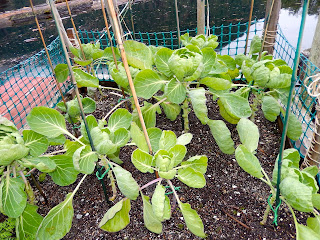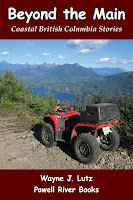5 Favourite 2017 Powell River Books Posts
of the five most popular
2017 Powell River Books posts.
My Powell River Books blog is where I share posts about off-the-grid float cabin living. Looking back at 2017, here are some of the most popular posts. Click each title to read the entire post.
Compost Quick -- I have a chicken wire compost barrel where I use put kitchen scraps and garden clippings from spring to fall. Then I bury it in a pit to complete the process over winter. The soil increases the size of my cliffside potato patch.
 Off the Grid Living -- Wayne and I live away from town and take care of our own utilities with solar, wind and a generator for electricity, hand pump for water, propane for the stove and refrigerator, and a compost toilet.
Off the Grid Living -- Wayne and I live away from town and take care of our own utilities with solar, wind and a generator for electricity, hand pump for water, propane for the stove and refrigerator, and a compost toilet.  Powell Lake by Barge and Quad -- We use a barge to take our quads on camping trips around Powell Lake. We didn't have a place to store our bikes at the cabin. The barge does that and provides us with a unique means to explore.
Powell Lake by Barge and Quad -- We use a barge to take our quads on camping trips around Powell Lake. We didn't have a place to store our bikes at the cabin. The barge does that and provides us with a unique means to explore. Stocking Up the Woodpile -- Our Kozi woodstove makes it possible to live off the grid in all seasons. To keep it fed all winter long we have to fill the woodshed in summer and fall. A generator run log splitter sure beats an axe.
Stocking Up the Woodpile -- Our Kozi woodstove makes it possible to live off the grid in all seasons. To keep it fed all winter long we have to fill the woodshed in summer and fall. A generator run log splitter sure beats an axe. Homemade Garlic Dill Pickles -- Living off the grid has inspired me to learn new sustainability skills like canning. I put up what I grow in my float garden and deck pots. Wayne loves my homemade dill pickles on his BBQ hamburgers.
Homemade Garlic Dill Pickles -- Living off the grid has inspired me to learn new sustainability skills like canning. I put up what I grow in my float garden and deck pots. Wayne loves my homemade dill pickles on his BBQ hamburgers. We hope you enjoyed the tour. You can read more about our off-the-grid lifestyle and adventures in Wayne's Coastal BC Stories series of books and e-books. Go to PowellRiverBooks.com for more information and ordering details.
We hope you enjoyed the tour. You can read more about our off-the-grid lifestyle and adventures in Wayne's Coastal BC Stories series of books and e-books. Go to PowellRiverBooks.com for more information and ordering details.Want to see a review from my Margy Meanders blog? Check out my 5 Favourite 2017 Margy Meanders Posts. Hope your 2017 was as eventful as ours. Give us an update. -- Margy



















































